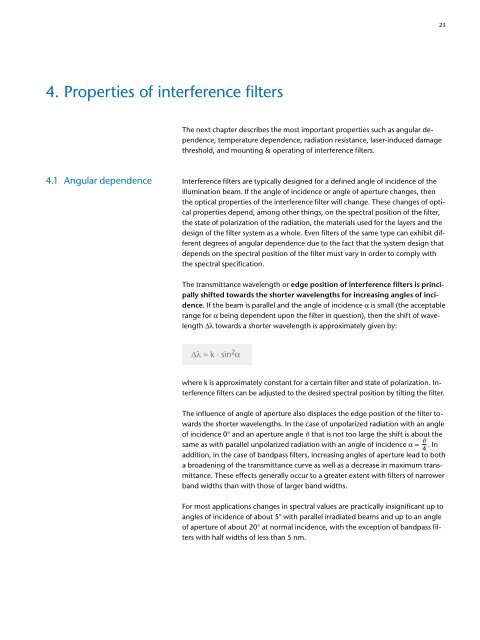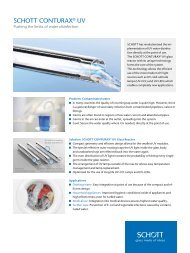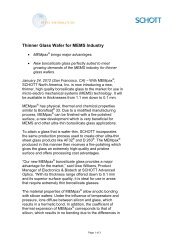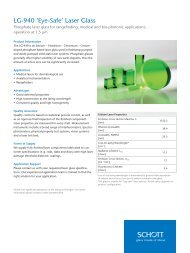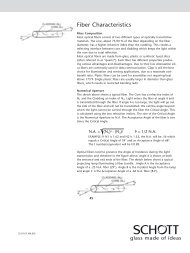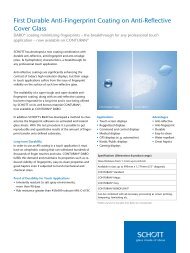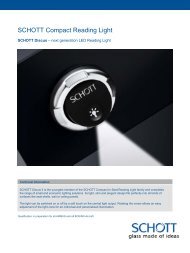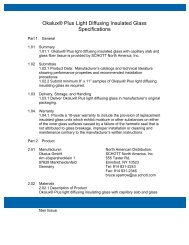Optical Filters 2013 - SCHOTT North America
Optical Filters 2013 - SCHOTT North America
Optical Filters 2013 - SCHOTT North America
You also want an ePaper? Increase the reach of your titles
YUMPU automatically turns print PDFs into web optimized ePapers that Google loves.
234. Properties of interference filtersThe next chapter describes the most important properties such as angular dependence,temperature dependence, radiation resistance, laser-induced damagethreshold, and mounting & operating of interference filters.4.1 Angular dependenceInterference filters are typically designed for a defined angle of incidence of theillumination beam. If the angle of incidence or angle of aperture changes, thenthe optical properties of the interference filter will change. These changes of opticalproperties depend, among other things, on the spectral position of the filter,the state of polarization of the radiation, the materials used for the layers and thedesign of the filter system as a whole. Even filters of the same type can exhibit differentdegrees of angular dependence due to the fact that the system design thatdepends on the spectral position of the filter must vary in order to comply withthe spectral specification.The transmittance wavelength or edge position of interference filters is principallyshifted towards the shorter wavelengths for increasing angles of incidence.If the beam is parallel and the angle of incidence α is small (the acceptablerange for α being dependent upon the filter in question), then the shift of wavelengthΔλ towards a shorter wavelength is approximately given by:Δλ ≈ k · sin 2 αwhere k is approximately constant for a certain filter and state of polarization. Interferencefilters can be adjusted to the desired spectral position by tilting the filter.The influence of angle of aperture also displaces the edge position of the filter towardsthe shorter wavelengths. In the case of unpolarized radiation with an angleof incidence 0° and an aperture angle ϑ that is not too large the shift is about thesame as with parallel unpolarized radiation with an angle of incidence α = ϑ 4 . Inaddition, in the case of bandpass filters, increasing angles of aperture lead to botha broadening of the transmittance curve as well as a decrease in maximum transmittance.These effects generally occur to a greater extent with filters of narrowerband widths than with those of larger band widths.For most applications changes in spectral values are practically insignificant up toangles of incidence of about 5° with parallel irradiated beams and up to an angleof aperture of about 20° at normal incidence, with the exception of bandpass filterswith half widths of less than 5 nm.


